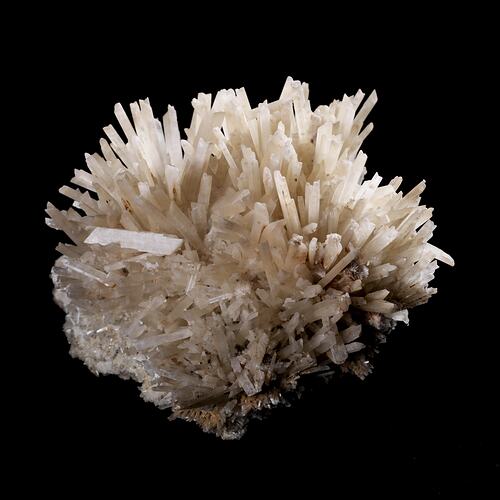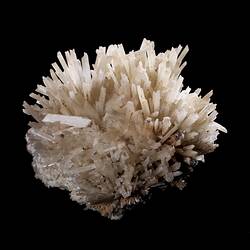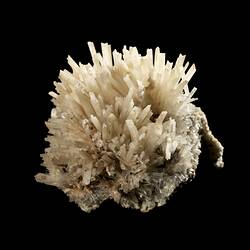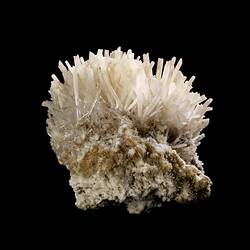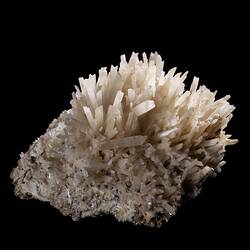Summary
Gypsum is an extremely common, usually colourless or white mineral found around the world. It forms when lake, sea or some hot spring waters evaporate and when hydrothermal anhydrite (calcium sulphate) reacts with water. Since it largely forms by evaporation it is often found with other evaporite minerals such as halite (salt). This specimen comes from a lake near Bolton in Victoria's mallee region.
In 2011 the presence of gypsum in the polar regions of Mars was confirmed by the Mars Exploration Rover Opportunity when it found a thin vein near the rim of Endeavour Crater. Previously the Mars Reconnaissance Orbiter had observed large dunes thought to be made of gypsum due to their resemblance to the gypsum dunes of White Sands Monument in New Mexico, USA.
Alabaster is a form of gypsum that has been used for sculpture for millennia. Today, gypsum is commercially used as a source of sulphur in fertiliser and in the manufacture of cement and plaster. The name plaster of Paris comes from the gypsum mined around Montmartre and the name gypsum comes from the Greek "gypsos", meaning plaster.
Gypsum is calcium sulphate dihydrate.
Specimen Details
-
Collection Names
-
Specimen Nature
Form: Large
-
Species
-
Group
-
Class
-
Category
-
Scientific Group
-
Discipline
-
Collecting Areas
-
Type of Item
